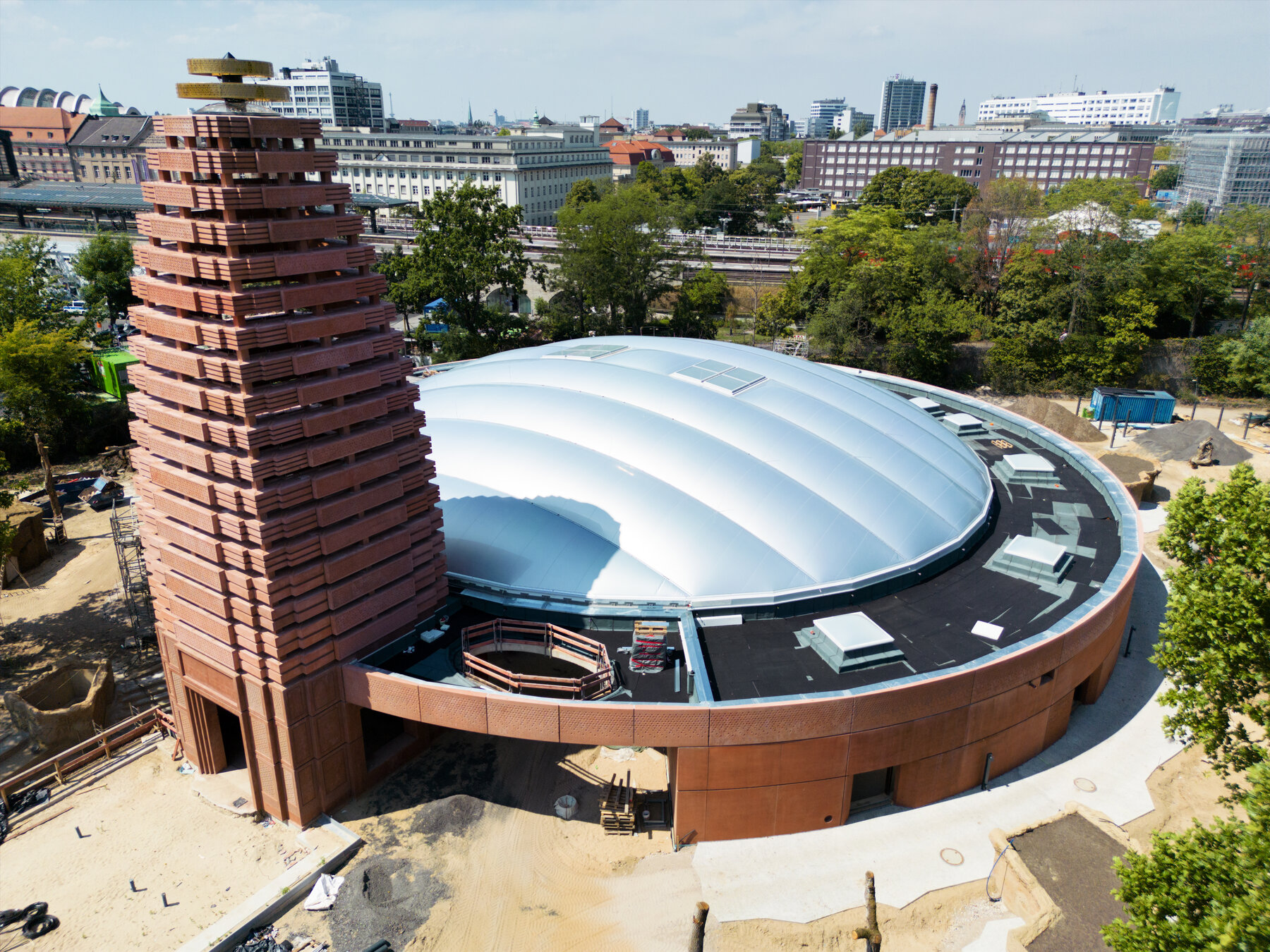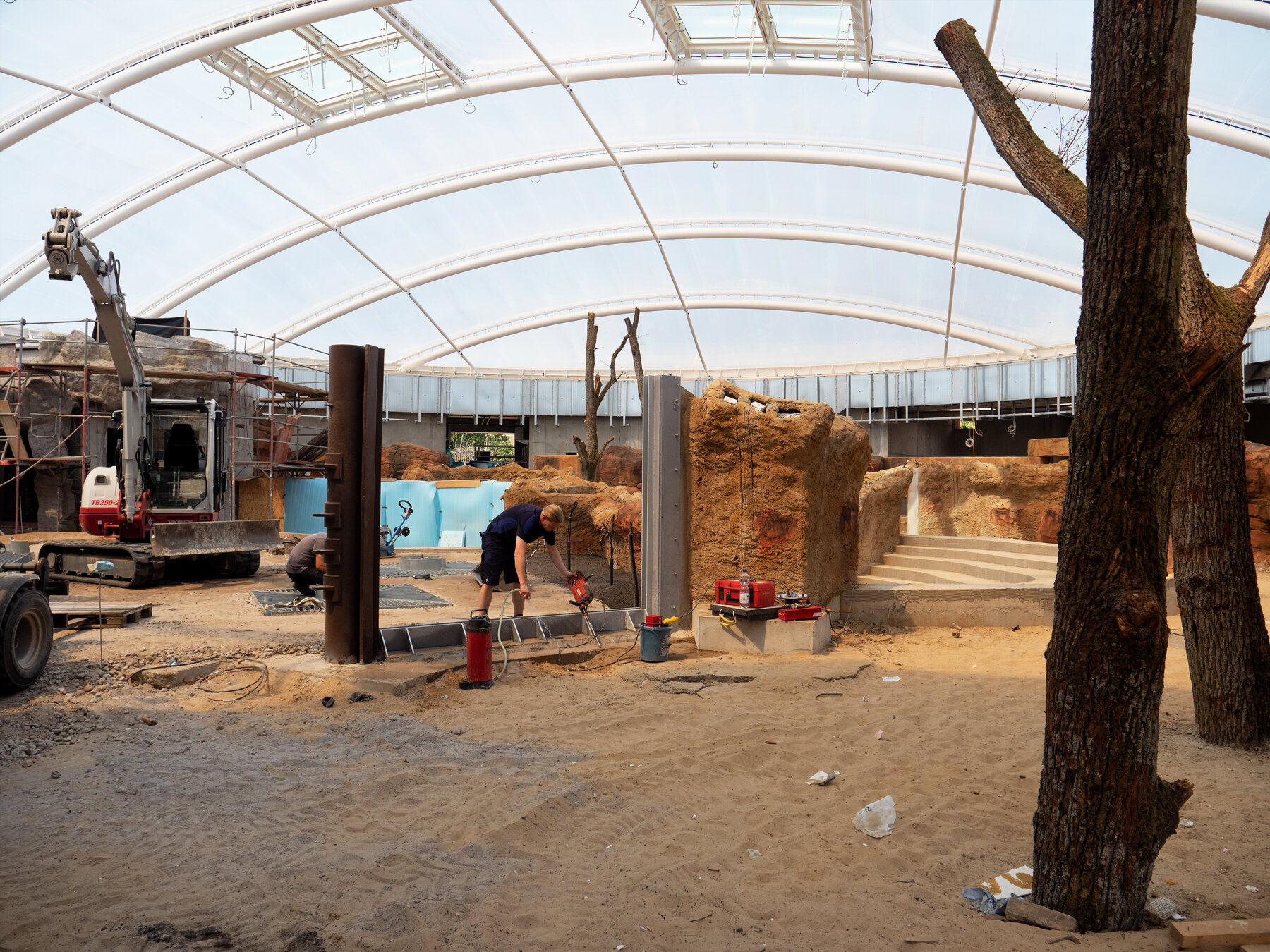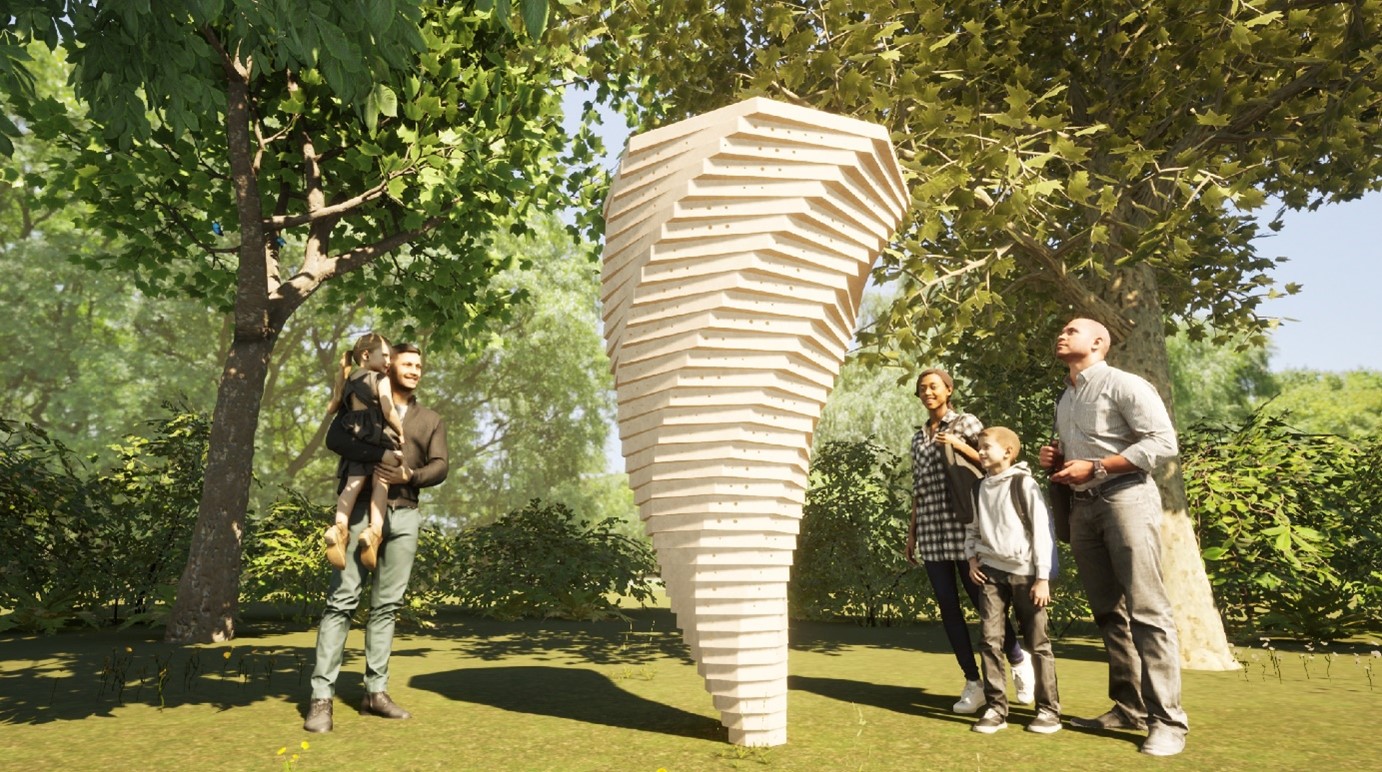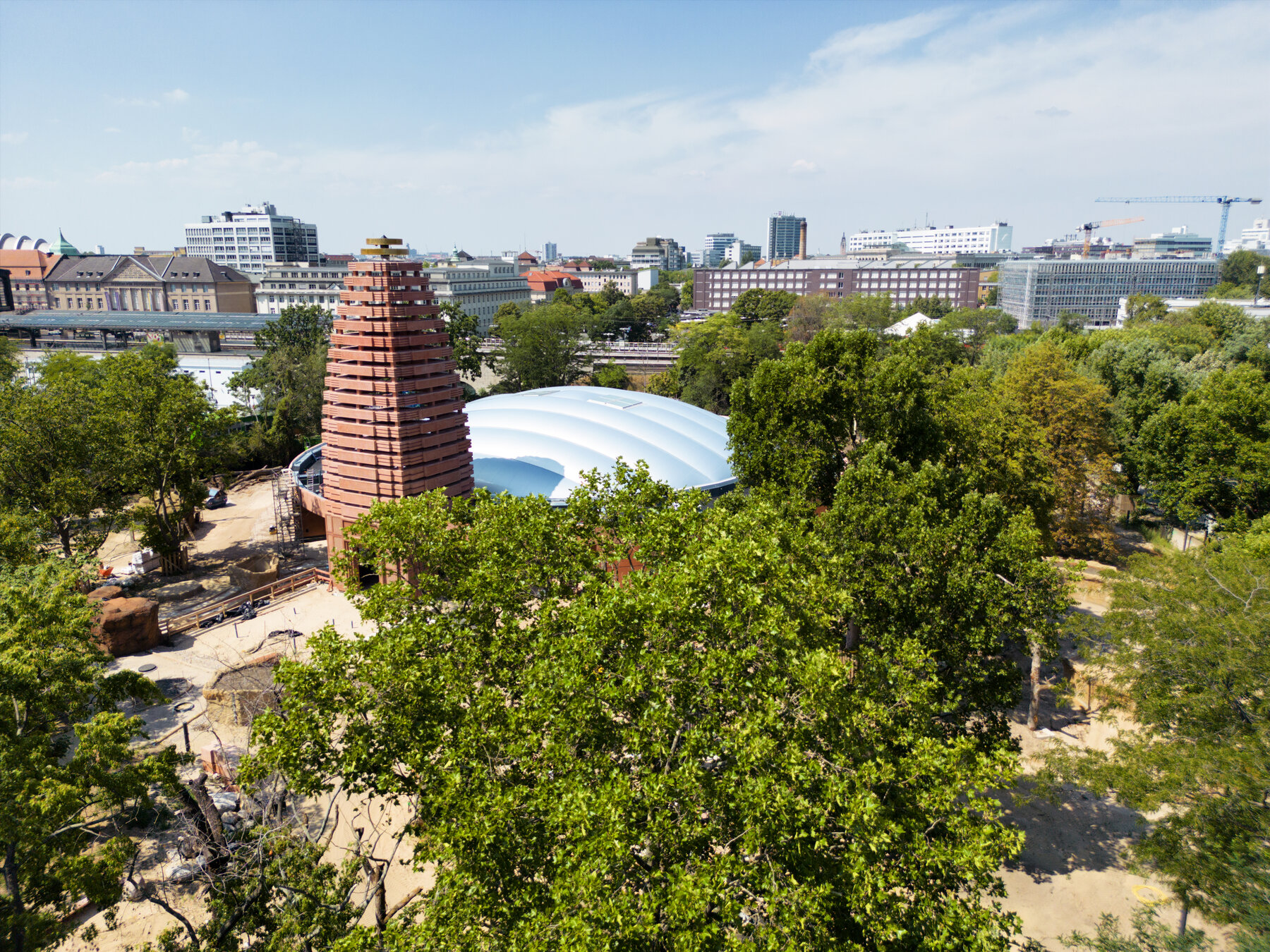A Glimpse into a new World at Zoo Berlin
Construction is progressing nicely on the new habitat, which will cover an area of around 14,000 m² and emulate the swampy grassland home of Indian rhinoceroses, Visayan warty pigs and tapirs. The new animal homes, building entrances and visitor pathways are gradually taking shape. The facility’s centrepiece is a 25-metre tower that was completed at the beginning of the year. It stands as a monument to species conservation – an extremely important topic for modern-day zoos: “We are facing a huge, complex and very worrying task,” says Zoo and Tierpark Director Dr Andreas Knieriem. “Wishes must be followed by action to ensure the long-term survival of threatened species like the Indian rhinoceros.” He also stresses the crucial importance of biodiversity: “Without it, all life on our planet is at risk, so this is a matter that concerns each and every one of us.” A wishing well inside the tower will let visitors make a direct contribution to initiatives that are working to protect rhinoceroses living wild in the Indian state of Assam.
There has been plenty going on around the red-brick tower in recent weeks. A huge foil cushion roof now spans the inside of the new facility. The “cushions” that make up this high-tech roof are each composed of four layers of plastic sheeting – or “foil” – through which pressurised air flows. The sealed edges of the cushions are slotted into aluminium profiles affixed to eight steel girders. The roof covers an area of about 1,100 m2, with the longest cushion measuring almost 40 metres. It weighs approximately three tonnes, with the foil itself accounting for only around two thirds of that weight. In order to avoid excessive solar radiation and heat build-up, the outermost layer of foil was printed with a reflective honeycomb pattern.

This striking roof has a number of advantages, such as low maintenance due to its ability to self-clean in the rain. Also, the material lets in plenty of natural light – including UV, which benefits the indoor plants. The deadwood elements inside the new building are already in place. In future, six-metre-tall black olive trees will also adorn the visitor area, adding to the distinctive atmosphere. Large plant holders have already been placed in the ground and are ready for use. The trees are expected to be planted in October.

As soon as temperatures started to rise, work began on painting the interior of the new animal house and creating the artificial rocks. The rhinoceros and tapir pools have already been excavated, and the glass walls are in place that will give visitors an underwater view of the bathing animals.
The new world of experience at Zoo Berlin will be complemented by a specially commissioned artwork, selected by a committee of experts from among a number of proposals. The winning submission, chosen for its high quality and expressive power, is a sculpture by Adrien Missika entitled Ein Horn (one horn), which has an obvious connection to the site and its inhabitants. When the facility is finished, the artwork will be displayed on the green area in front of the Rhino Pagoda.

© Adrien Missika
The sculpture represents an upside-down horn that has been driven into the ground. The object clearly references both the architecture of the building and the theme of species conservation.
Funding for the close-to-nature rhinoceros habitat was secured before the Covid-19 pandemic, which meant that construction could go ahead as planned. A total of around €20 million was budgeted for construction of the exciting new world. Like the Panda Garden, the Rhino Pagoda was designed by Berlin architecture firm dan pearlman.
